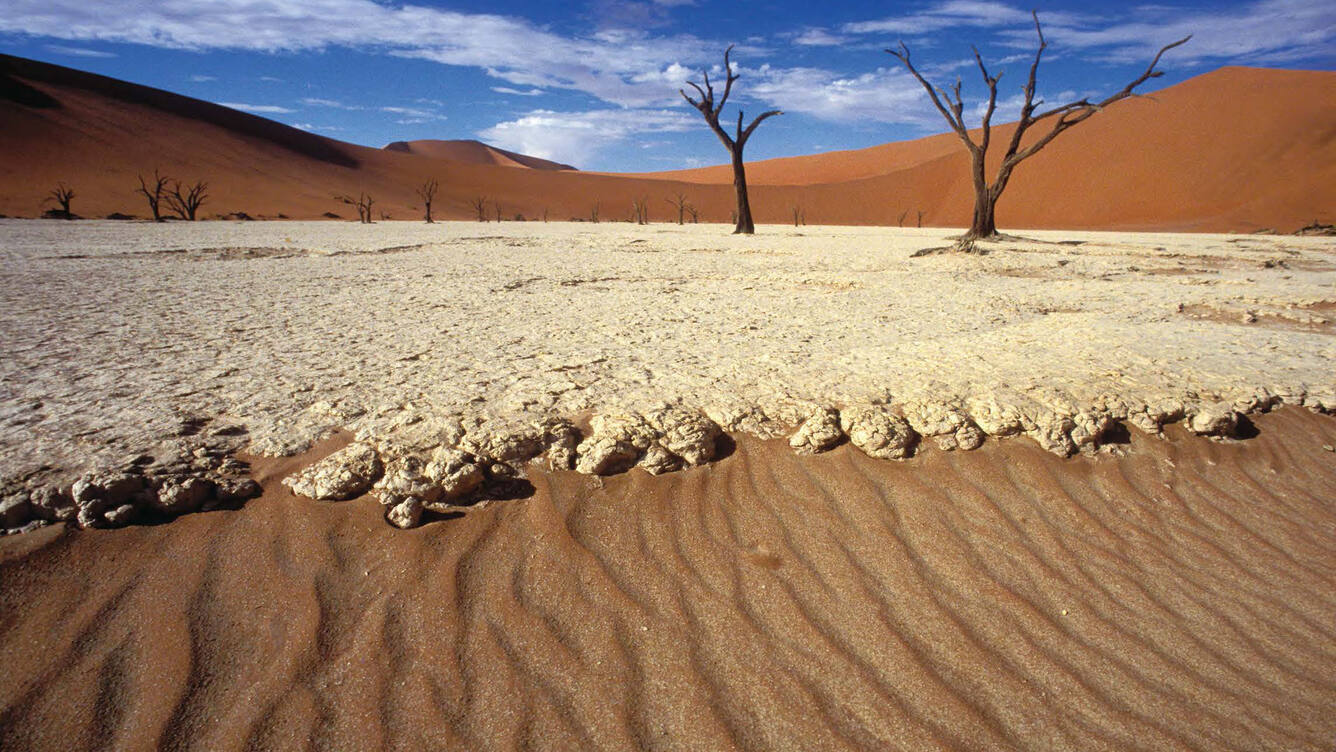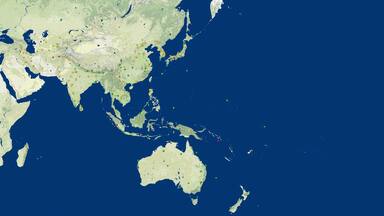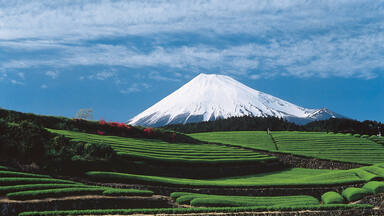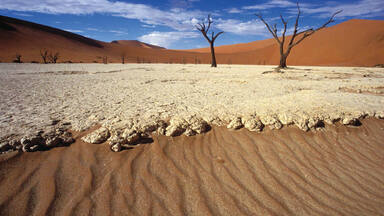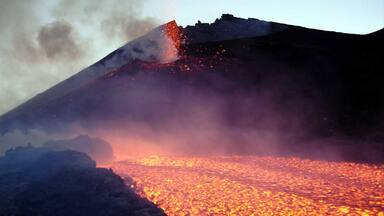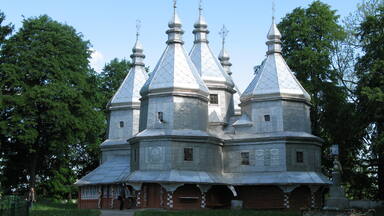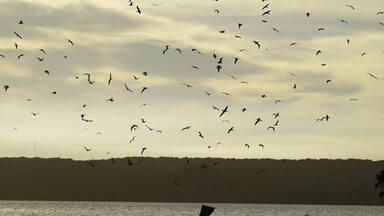World Heritage Committee inscribes two new natural sites from China and Namibia on UNESCO World Heritage List
China’s Xinjiang Tianshan and Namib Sand Sea (Namibia) were inscribed on UNESCO’s World Heritage List on Friday. Mount Kenya-Lewa Wildlife conservancy (Kenya), was also inscribed as an extension to Mount Kenya Natural Park / Natural Forest.
Xinjiang Tianshan (China)
Xinjiang Tianshan (China) comprises four components—Tomur, Kalajun-Kuerdening, Bayinbukuke and Bogda— that total 606,833 hectares. They are part of the Tianshan mountain system of Central Asia, one of the largest mountain ranges in the world. Xinjiang Tianshan presents unique physical geographic features and scenically beautiful areas including spectacular snow and snowy mountains glacier-capped peaks, undisturbed forests and meadows, clear rivers and lakes and red bed canyons. These landscapes contrast with the vast adjacent desert landscapes, creating a striking visual contrast between hot and cold environments, dry and wet, desolate and luxuriant. The landforms and ecosystems of the site have been preserved since the Pliocene epoch and present an outstanding example of ongoing biological and ecological evolutionary processes. The site also extends into the Taklimakan Desert, one of the world’s largest and highest deserts, known for its large dune forms and great dust storms. Xinjiang Tianshan is moreover an important habitat for endemic and relic flora species, some rare and endangered.
Namib Sand Sea (Namibia)
Namib Sand Sea (Namibia) is the only coastal desert in the world that includes extensive dune fields influenced by fog. Covering an area of over three million hectares and a buffer zone of 899,500 hectares, the site is composed of two dune systems, an ancient semi-consolidated one overlain by a younger active one. The desert dunes are formed by the transportation of materials thousands of kilometres from the hinterland, that are carried by river, ocean current and wind. It features gravel plains, coastal flats, rocky hills, inselbergs within the sand sea, a coastal lagoon and ephemeral rivers, resulting in a landscape of exceptional beauty. Fog is the primary source of water in the site, accounting for a unique environment in which endemic invertebrates, reptiles and mammals adapt to an ever-changing variety of microhabitats and ecological niches.
This is the first natural site in Namibia to be inscribed on the World Heritage List.
Mount Kenya-Lewa Wildlife conservancy (Kenya)
Mount Kenya-Lewa Wildlife conservancy (Kenya), was inscribed as an extension added to Mount Kenya Natural Park / Natural Forest. The area added to the Mount Kenya Natural Park consists of a core of nearly 20,000 hectares and a buffer zone of almost 70,000 ha. It is situated between the Tropical Montane ecosystem and the semi-arid savannah grasslands and its inscription completes the preservation of the ecological and biological processes preserved at the Mount Kenya Natural Park, which was inscribed in 1997. The extension lies within the traditional migrating route of the African elephant population of the Mount Kenya Natural Park, world renowned as the location of the second highest peak in Africa, Mt Kenya, that rises 5,199 m above the sea. The extinct volcano numbers 12 glaciers that are receding rapidly, and four secondary peaks overlooking U-shaped glacial valleys. With its rugged glacier-clad summits and forested middle slopes, Mount Kenya is one of the most impressive landscapes in East Africa.
The World Heritage Committee is currently holding its 37th session in Phnom Penh. The session will close in Angkor on 27 June.
Decisions (1)
The World Heritage Committee,
1. Having examined Documents WHC-13/37.COM/8B and WHC-13/37.COM/INF.8B2 ,
2. Inscribes the Namib Sand Sea, Namibia , on the World Heritage list on the basis of criteria (vii) , (viii) , (ix) and (x) ;
3. Adopts the following Statement of Outstanding Universal Value:
Brief Synthesis
The Namib Sand Sea lies along the arid African coast of the South Atlantic lying wholly within Namibia’s Namib-Naukluft Park. It covers an area of 3,077,700 hectares, with an additional 899,500 hectares designated as a buffer zone.
The Namib Sand Sea is a unique coastal fog desert encompassing a diverse array of large, shifting dunes. It is an outstanding example of the scenic, geomorphological, ecological and evolutionary consequences of wind-driven processes interacting with geology and biology. The sand sea includes most known types of dunes together with associated landforms such as inselbergs, pediplains, and playas, formed through aeolian depositional processes. It is a place of outstanding natural beauty where atmospheric conditions provide exceptional visibility of landscape features by day and the dazzling southern hemisphere sky at night.
Life in the fog-bathed coastal dunes of the Namib Sand Sea is characterised by very rare behavioural, morphological and physiological adaptations that have evolved throughout its specialist communities. The large number of endemic plants and animals are globally-important examples of evolution and the resilience of life in extreme environments.
Criterion (vii) :The property is the world’s only coastal desert that includes extensive dune fields influenced by fog. This alone makes it exceptional at a global scale, but it also represents a superlative natural phenomenon on account of the three-part ‘conveyor system’ which has produced the massive dune field from material transported over thousands of kilometres from the interior of the African continent by river erosion, ocean currents and wind. Most dune fields elsewhere in the world are derived from bedrock eroded in situ. The age, extent and height of the dunes are outstanding and the property also exhibits a range of features that give it exceptional aesthetic qualities. The diversity of dune formations, their ever-changing form and the range of colour and texture create landscapes of outstanding natural beauty.
Criterion (viii) : The property represents an exceptional example of ongoing geological processes involving the formation of the world’s only extensive dune system in a coastal fog desert through transport of material over thousands of kilometres by river, ocean current and wind. Although the nominated area encompasses only the Aeolian elements of this ongoing geological process the other elements of the ‘conveyor system’ are assured. The diversity of the ever-changing dune formations, sculpted by pronounced daily and seasonal changes in dominant wind directions is also exceptional at a global scale within such a relatively small area. Criterion (ix) : The property is an exceptional example of ongoing ecological process in a coastal fog desert where plant and animal communities are continuously adapting to life in a hyper arid environment. Fog serves as the primary source of water and this is harvested in extraordinary ways while the ever-mobile wind-blown dunes provide an unusual substrate in which well-oxygenated subsurface sand offers respite and escape for ‘swimming’ and ‘diving’ invertebrates, reptiles and mammals. The outstanding combination and characteristics of the physical environment – loose sand, variable winds and fog gradients across the property – creates an ever-changing variety of micro-habitats and ecological niches that is globally unique on such a scale.
Criterion (x) : The property is of outstanding importance for the in-situ conservation of an unusual and exceptional array of endemic species uniquely adapted to life in a hyper-arid desert environment in which fog serves as the primary source of water. These are mostly invertebrate animals and display a range of very rare behavioural and physiological adaptations to the desert environment where they live that contributes significantly to the property’s OUV.
Integrity
The boundaries of the property encompass all the elements of the Namib Sand Sea that exemplify its Outstanding Universal Values. These elements are well conserved and included at a scale appropriate to maintaining ongoing dynamic processes. The large size of the area (30,777 km2) ensures that all the active and underlying (fossilized) dune formations and features, causative processes and ancillary habitats are included. The extensive dune-scapes are unspoilt and continuously refreshed and maintained by wholly natural processes. Because of its vast size, difficulty of access and current management within the protected Namib-Naukluft Park (49,768 km2), the Namib Sand Sea is well conserved and in an excellent, undamaged state. Permanent visitor and management infrastructure is non-existent within the boundaries of the property and visitation is restricted to small, temporary point locations that have no measurable effect on the area.
Protection and management requirements
The Namib Sand Sea has been under conservation management for more than 50 years with well-established management and resource allocation systems, based on regularly revised and updated management plans and long-term budgetary planning. Prior to establishment of conservation management, the area was protected for its potential as a diamond-mining area, but this was never realised. Key management issues today include managing the increasing demand for visitor access to pristine areas and precluding mineral exploration rights that would impact on the values and attributes of the area. There is potential for serial extension of the Namib Sand Sea beyond the Namib-Naukluft Park and beyond national borders to include other significant dune systems within other protected areas of the larger Namib Desert.
4. Commends the State Party for its landmark decision to terminate all existing mineral exploration licenses within the property, thus eliminating the threat of any future mining operations that would affect its integrity;
5. Requests the State Party to provide a finalized management plan and map showing the intended zonation of the property and the institutional arrangements for its implementation and monitoring to the World Heritage Centre by 31 December 2013 ;
6. Considers that inscription of the property on the World Heritage List provides an opportunity to further enhance a number of protection and management arrangements for the property and therefore also requests the State Party to:
a) Confirm as soon as possible, through a letter to the World Heritage Centre, the termination of all remaining mineral prospecting licenses within the property at the earliest opportunity, noting that none of these old licences will be activated, and all will be extinguished by the end of January 2014;
b) Strengthen further participatory management arrangements with the indigenous peoples with rights related to the property, including to maintain traditional access and sustainable use of natural resources within the property and its buffer zone;
c) Improve visitor interpretation facilities to foster an appreciation of the unique values of the property;
d) Establish and implement a long-term programme to monitor key ecological and management effectiveness indicators and the State of Conservation of the property;
e) Strengthen management capacity in terms of financial and human resources, including the highly effective support provided to the property by the Gobabeb Training and Research Centre;
f) Enhance arrangements for the identification, allocation, management and monitoring of tourism concessions; and
g) Further strengthen efforts to control and eliminate invasive alien species within the property.
7. Further requests the State Party to provide a report to the World Heritage Centre by 1 February 2015 on progress in implementing the above recommendations for possible consideration by the World Heritage Committee at its 39th session in 2015;
8. Encourages the State Party, and neighbouring States Parties, to consider options to nominate further outstanding areas of the Namib Desert, including the potential for nominations to form serial extensions of the present property.
Read more about the decision